Imagine stepping into your backyard and being greeted by a sanctuary of comfort and style, a place where every corner invites you to relax and savor the outdoors. Whether you’re a novice just beginning your outdoor journey or a seasoned homeowner looking to elevate your space, “13 Outdoor Comfort Ideas for Your Next Project” is your go-to guide for creating the outdoor oasis of your dreams. This list is packed with fresh ideas that promise to enhance not just the aesthetics but also the functionality of your outdoor living area.
With the perfect blend of creativity and practicality, this guide ensures you’ll find inspiration and solutions tailored to your needs. From cozy seating arrangements to innovative lighting options, these ideas offer tangible benefits that will transform your patio or garden into a personal retreat. Get ready to embrace the joy of outdoor living, confident that you have the tools and tips to make your space both beautiful and inviting.
Incorporate Retractable Awning Systems
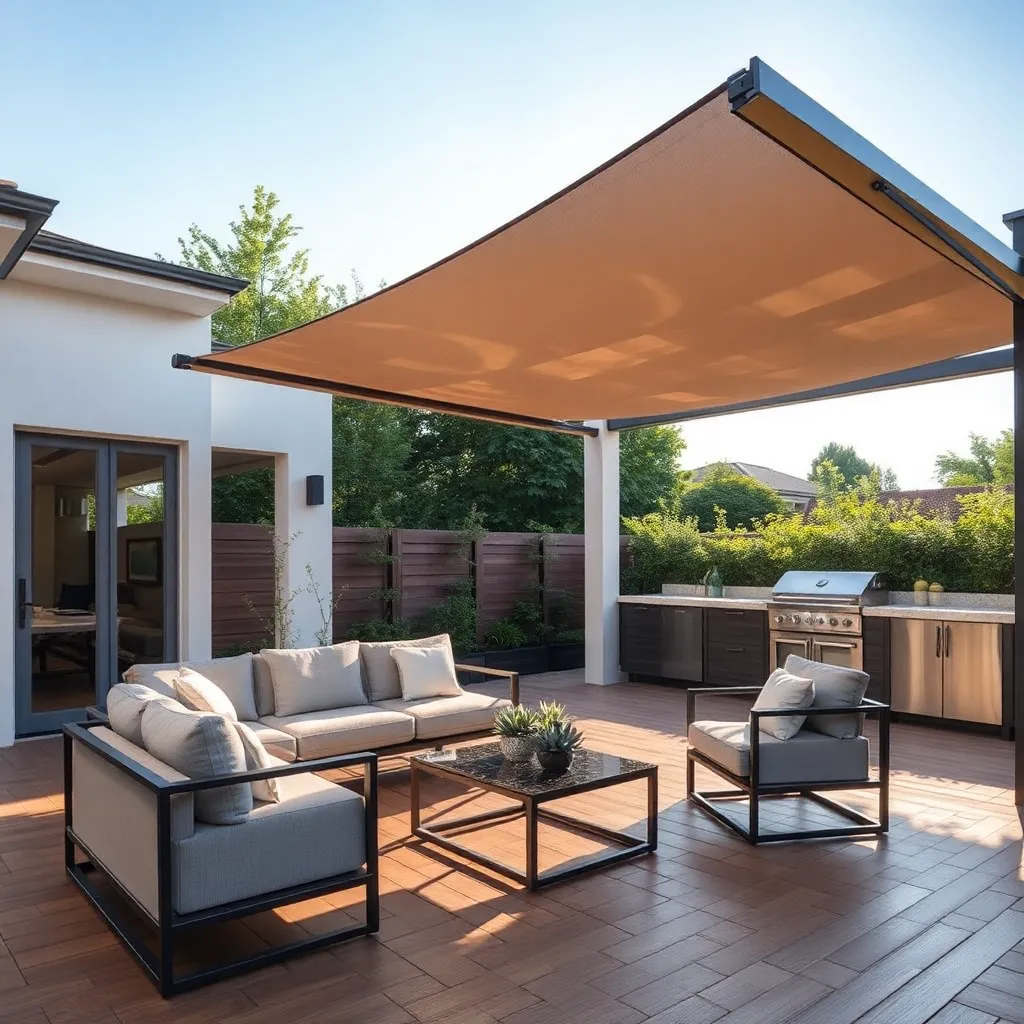
Enhancing your outdoor space with a retractable awning system provides the flexibility to enjoy both sun and shade at your convenience. For a basic setup, consider using durable materials like acrylic fabric, which is resistant to fading and mildew. These awnings are available in various sizes, with widths ranging from 10 to 20 feet, allowing you to customize coverage based on your patio or deck dimensions.
For those seeking advanced options, motorized retractable awnings equipped with wind sensors ensure automatic retraction during high winds, preventing damage. When installing, ensure the awning is mounted at a slight angle (typically 14 degrees) to allow for adequate water runoff.
- Consider adding side panels for enhanced privacy and wind protection.
- Choose neutral colors that complement your home’s exterior for a cohesive look.
With these systems, you can seamlessly blend comfort and style into your outdoor living area.
Select Weather-Resistant Furniture Materials
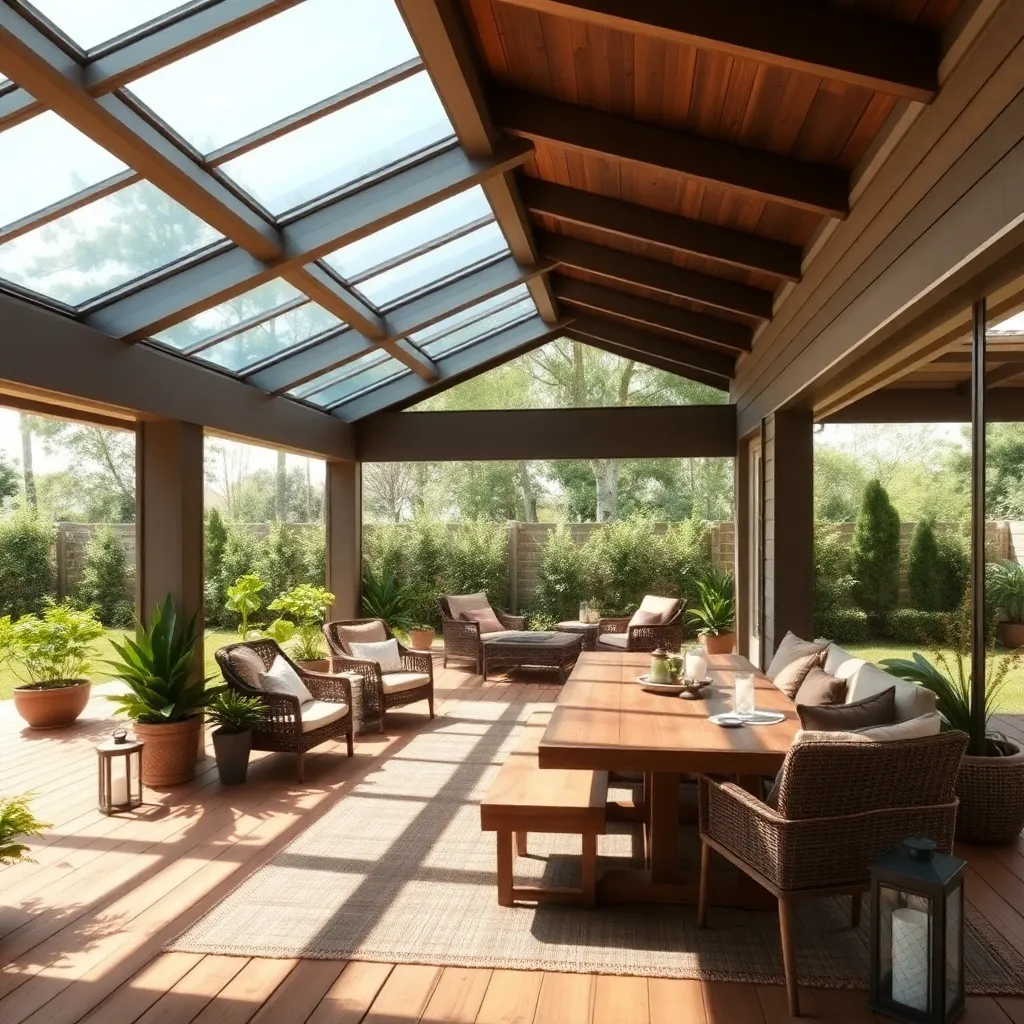
For an outdoor space that stands up to the elements, it’s crucial to choose weather-resistant furniture materials that combine durability with style. Opt for materials like teak, eucalyptus, or cedar wood, which naturally resist moisture and decay while adding a touch of warmth to your design. For a more contemporary look, consider powder-coated aluminum or stainless steel, which resist rust and corrosion, making them excellent choices for coastal areas or humid climates. Remember to choose fabrics that are UV-resistant to prevent fading, such as those made with solution-dyed acrylic.
Beyond basic material selection, elevate your outdoor experience by incorporating advanced design elements that enhance both functionality and aesthetic appeal. Use materials like high-density polyethylene (HDPE) for a sustainable and low-maintenance option, perfect for creating sleek, modern designs. If you’re keen on mixing materials for a unique look, try combining metal frames with wooden accents or woven synthetics for a stylish, layered effect. Consider the use of removable cushions with quick-dry foam to ensure comfort and longevity, making your outdoor furniture a practical and inviting part of your home’s outdoor retreat.
Add Cozy Outdoor Heating Options
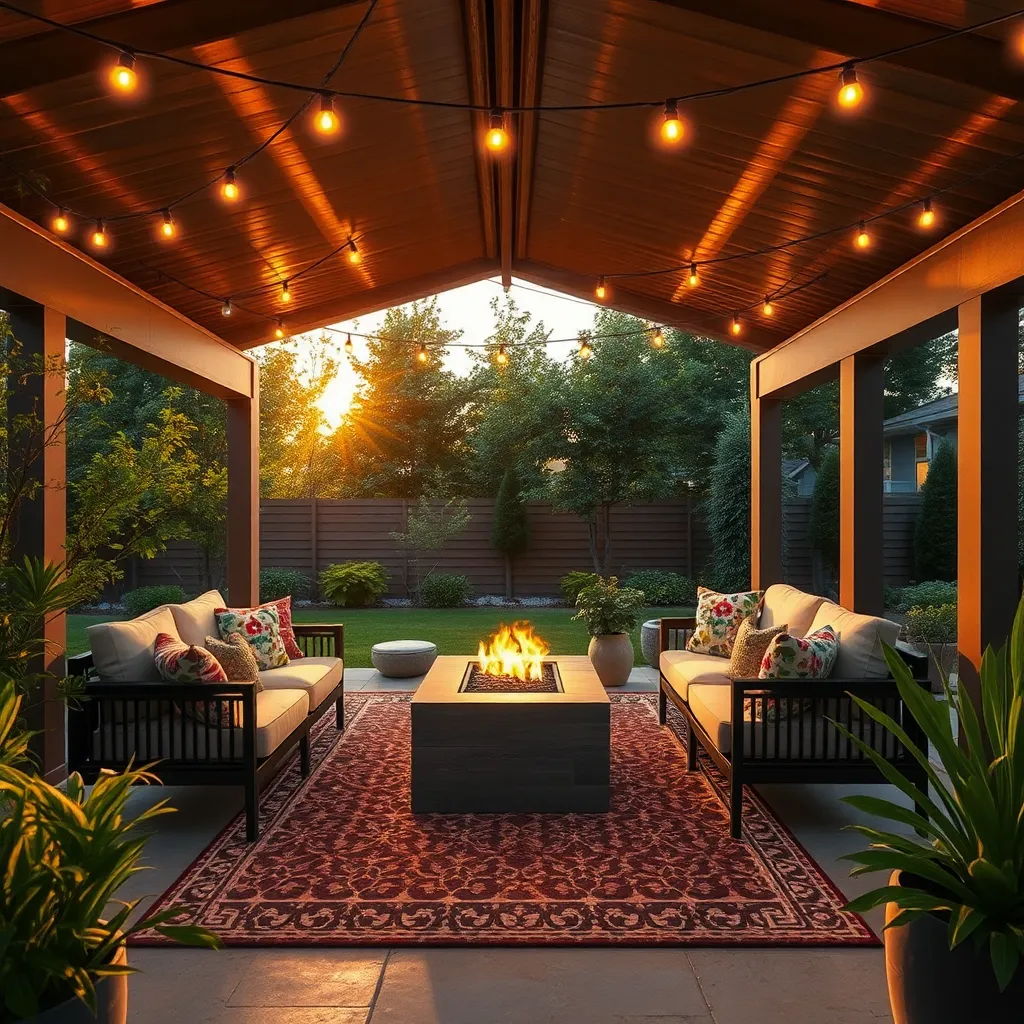
To enhance comfort in your outdoor space, consider adding cozy heating options that extend usability year-round. **Portable propane heaters** are a flexible choice for beginners, offering easy setup and mobility to warm up different areas as needed. For a more permanent solution, installing a **built-in gas fire pit** can provide both warmth and ambiance, serving as a focal point for gatherings. Make sure to position heaters in safe areas away from flammable materials and consider wind direction to maximize efficiency.
For those looking to blend style with function, **infrared patio heaters** mounted above seating areas offer sleek and efficient heating without taking up floor space. **Electric models** are ideal for covered patios where gas heaters might not be safe. Incorporating **heat-resistant materials** like stone or metal in your design not only complements modern aesthetics but also ensures durability. Whatever option you choose, always prioritize safety by following manufacturer guidelines and local regulations for installation and use.
Utilize Mosquito-Repellent Plants Strategically
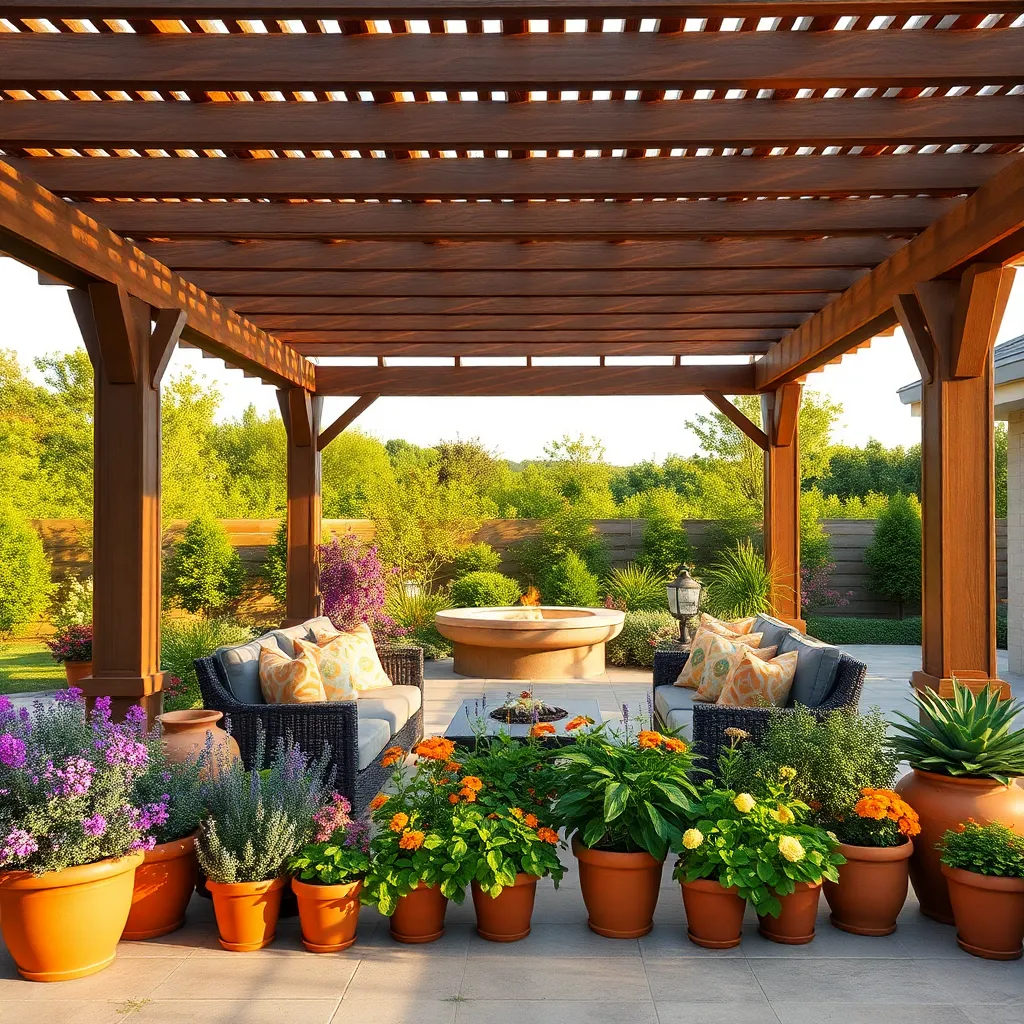
To naturally reduce mosquito presence, strategically incorporate mosquito-repellent plants like citronella, lemongrass, and lavender around your outdoor shelter. These plants not only deter pests but also add a touch of greenery and fragrance to your space. Position them in pots or planters around seating areas or along pathways to create a natural barrier. For a more robust effect, consider planting them in raised beds, ensuring they receive adequate sunlight and water to thrive.
For those seeking a more advanced approach, integrate these plants into the structure of your shelter by creating hanging gardens or vertical walls. Use durable materials like cedar or pressure-treated wood for planter boxes, which resist weathering and pests. A vertical garden system can maximize space and enhance the aesthetic appeal of your shelter. Ensure that the plants are easily accessible for regular maintenance and trimming, promoting healthy growth and consistent mosquito deterrence. This not only optimizes your garden’s functionality but also elevates the overall design of your outdoor project.
Install Shade Sail Canopies
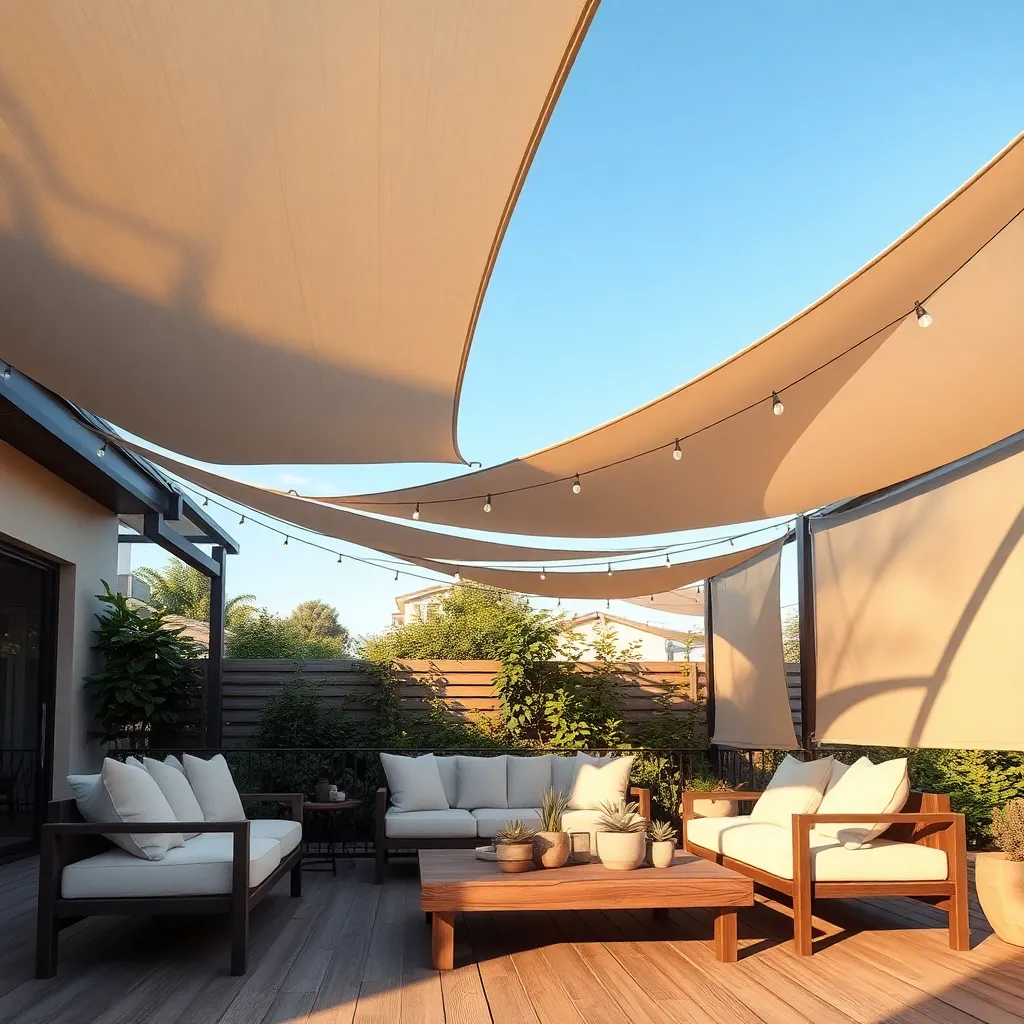
For an elegant and functional way to create shade in your backyard, consider installing shade sail canopies. These versatile structures can be tailored to fit various spaces, providing both protection from the sun and a stylish touch to your outdoor area. Choose UV-resistant fabric for durability, and ensure you have sturdy anchor points like posts or nearby trees to securely attach the sails. For beginners, prefabricated kits are available that include everything needed for installation, making this project manageable even for those new to DIY.
More experienced homeowners can opt for custom installations, allowing for unique configurations that perfectly suit your space. When planning your design, consider layering multiple sails at different heights for both aesthetic appeal and increased coverage. Use stainless steel hardware for longevity, and ensure the sails are installed with a slight angle to facilitate rain runoff. By thoughtfully selecting colors and shapes, shade sails can become not only a practical solution but also a unique design feature in your garden.
Design Multi-Functional Seating Areas
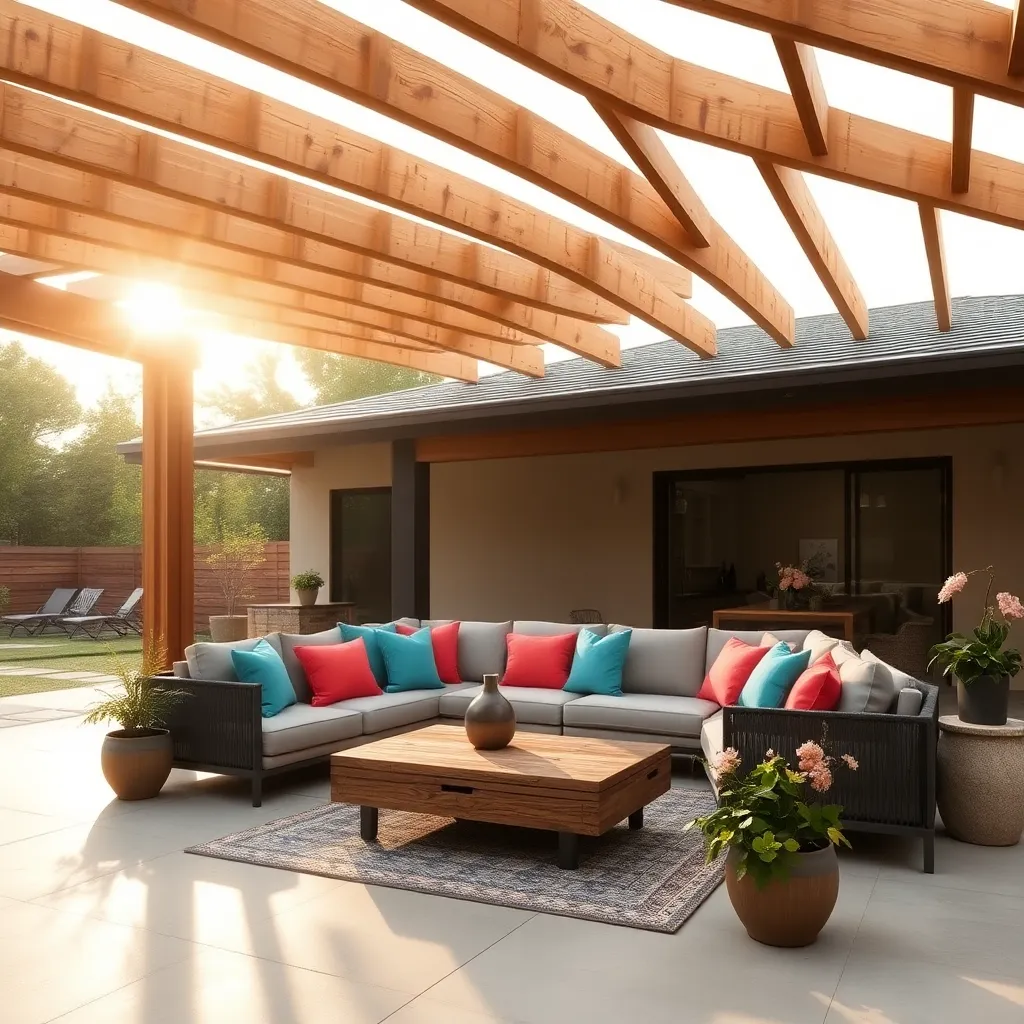
Designing multi-functional seating areas in your outdoor space is a smart way to maximize both comfort and utility. Start by selecting durable materials like weather-resistant wood or metal frames with outdoor-grade cushions that can withstand the elements. Consider a simple L-shaped bench that can fit neatly into a corner or a circular seating arrangement to foster conversation. Incorporate storage beneath the seating to keep cushions and outdoor essentials like blankets and games protected and organized.
For a more versatile setup, include movable elements like lightweight chairs or stools that can be easily rearranged to suit different occasions. Think about integrating planters or built-in tables at the ends of benches for added functionality and aesthetic appeal. If space allows, incorporate a pergola or trellis overhead to provide partial shade and a structure for climbing plants, adding both visual interest and comfort. With careful planning, your seating area can become the heart of your outdoor retreat, adaptable for both quiet relaxation and lively gatherings.
Use Natural Screening for Privacy
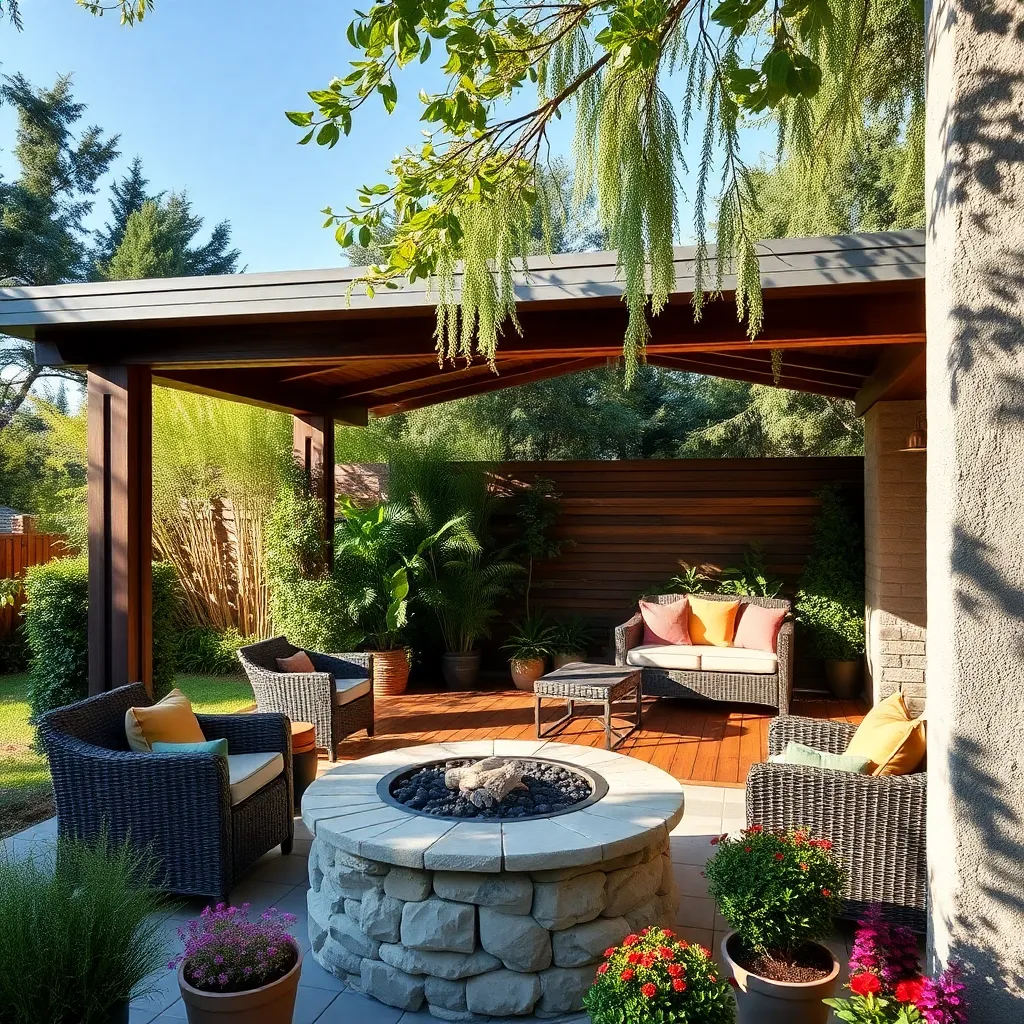
Creating natural screens can transform your outdoor space into a private oasis. Consider planting tall grasses like *Miscanthus* or *Pampas Grass*, which grow quickly and require minimal maintenance. For a more structured look, install a trellis and train fast-growing vines such as *Clematis* or *Honeysuckle* to climb over it. Ensure your plant selections are suited to your climate to maintain year-round privacy and beauty.
For those seeking a more immediate solution, consider using bamboo screens or willow hurdles. These materials are not only sustainable but also provide a rustic charm and blend seamlessly with natural surroundings. Position these screens strategically around patios or seating areas to block unwanted views while still allowing airflow and light. Advanced gardeners might try creating a living wall using modular planters filled with a mix of herbs and succulents for an edible privacy solution that thrives in full sun.
Create Windbreaks With Strategic Landscaping
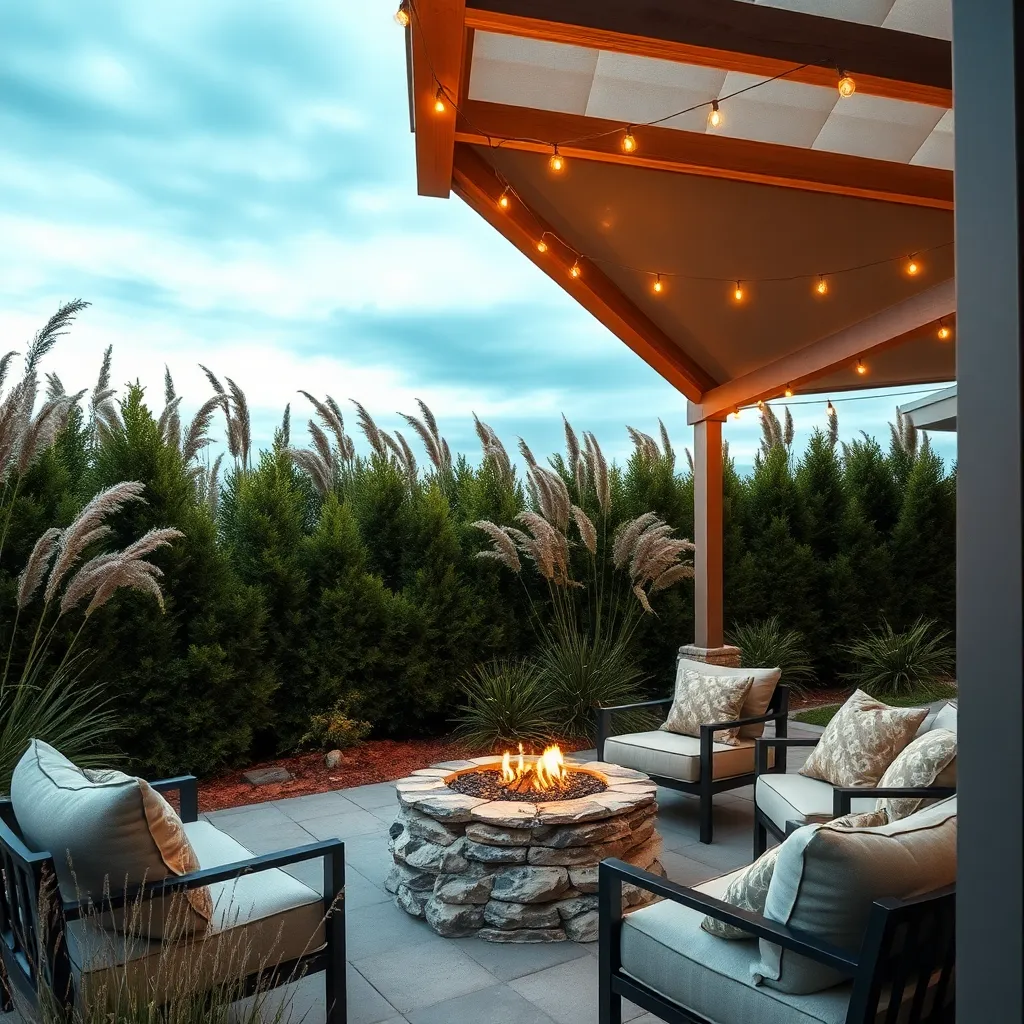
One effective way to create a windbreak in your outdoor space is by using a mix of dense shrubs and trees. For a beginner, start with hardy, evergreen species like junipers or arborvitae, which grow well in various climates and provide year-round protection. Plant them in staggered rows or clusters to break the wind’s force effectively. As these plants mature, they will form a natural barrier, reducing wind speed and creating a more comfortable environment in your yard.
For those with a bit more experience, consider incorporating a trellis or lattice with climbing plants such as clematis or wisteria for added wind protection. Using materials like weather-resistant wood or metal ensures durability. Place these structures strategically around seating areas or patios to enhance both wind resistance and visual appeal. Remember to space plants appropriately—typically 3 to 5 feet apart—to allow for healthy growth and optimal windbreak efficiency.
Opt for Portable Shelter Solutions
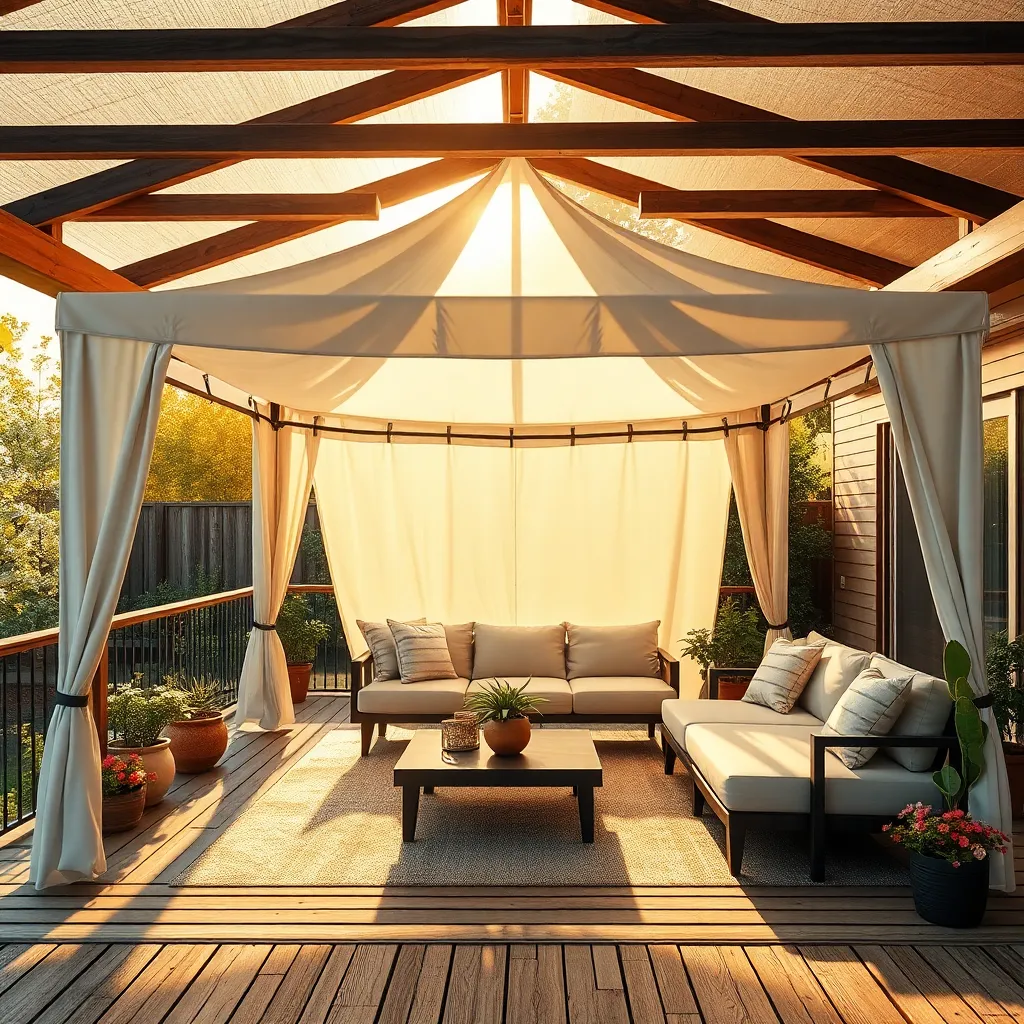
For a flexible and convenient outdoor space, consider investing in portable shelter solutions. These shelters, such as pop-up gazebos or retractable awnings, offer an easy way to provide shade and protection from the elements. Look for models made of durable materials like weather-resistant polyester with sturdy frames of aluminum or steel. This ensures they can withstand various weather conditions. Additionally, choose options with UV protection to safeguard against sun damage, making them both practical and long-lasting.
When selecting a portable shelter, think about the size and configuration that best suits your space. Measure your outdoor area to ensure the shelter fits perfectly without overcrowding. For a more advanced setup, consider modular designs that allow for expansion or integration with other garden elements. These can be easily assembled and disassembled, giving you the flexibility to adjust your outdoor space as needed. Add some outdoor string lights or fabric drapes to enhance the ambiance and create a cozy atmosphere for your gatherings.
Implement Waterproof Storage Solutions
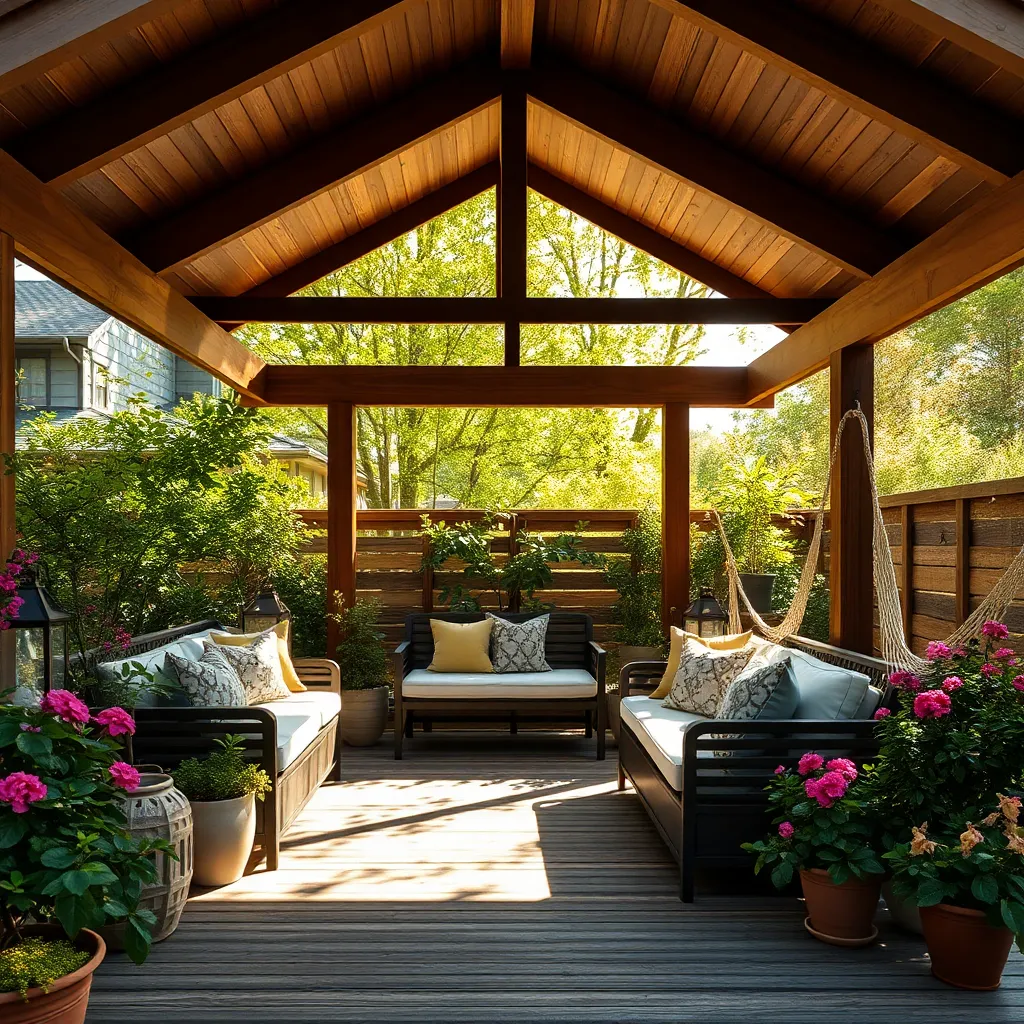
When creating an outdoor space, it’s crucial to implement waterproof storage solutions to protect your belongings from the elements. Consider using storage benches or deck boxes made from weather-resistant materials like resin, which can withstand rain and snow. These options are not only practical but also add a clean, finished look to your outdoor area. Beginners can start with pre-made storage units that require minimal assembly, while more experienced DIY enthusiasts might build custom solutions using treated wood and a waterproof sealant for enhanced durability.
Adding a waterproof tarp or cover to existing storage can be an affordable way to enhance protection. Opt for high-quality tarps with reinforced edges and UV protection to ensure longevity. For a more permanent solution, you can construct a small shed using galvanized steel or pressure-treated wood, both of which are excellent for withstanding harsh weather conditions. Ensure the shed has a sloped roof to facilitate water runoff, and consider installing a rubber or vinyl door seal to keep moisture out. These steps will help you maintain a tidy, organized, and resilient outdoor environment.
Choose Easy-To-Clean Outdoor Fabrics
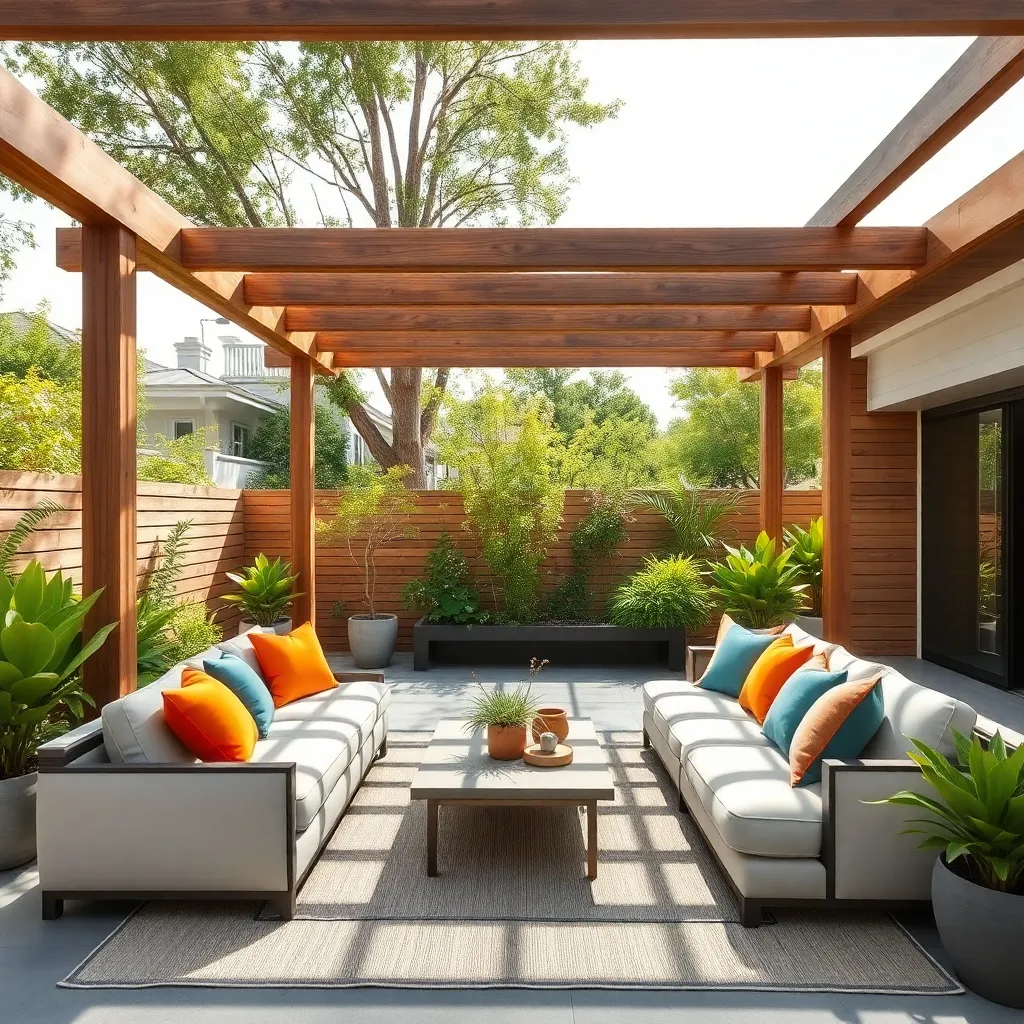
Opt for **easy-to-clean outdoor fabrics** to keep your outdoor spaces looking fresh with minimal effort. Fabrics like solution-dyed acrylic and polyester are excellent choices due to their durability and resistance to stains and mildew. These materials not only withstand the elements but are also typically treated with water-repellent finishes, making them perfect for cushions and drapes in outdoor shelters.
For added convenience, consider fabrics that offer **UV protection** to prevent fading and maintain vibrant colors over time. Choose removable covers that can be machine-washed, saving you time and energy on maintenance. As an advanced tip, look for fabrics with a higher denier count, which indicates a tighter weave and greater toughness, ensuring longevity even under frequent use. This attention to detail in your fabric selection will enhance the comfort and aesthetics of your outdoor retreat.
Integrate Adjustable Outdoor Curtains

To enhance your outdoor living area, consider integrating adjustable outdoor curtains for both style and functionality. These versatile additions allow you to control sunlight and privacy effortlessly. Opt for materials like weather-resistant fabrics such as Sunbrella or polyester blends, which ensure durability in various climates. Mount the curtains on sturdy, rust-resistant rods or tracks, allowing them to glide smoothly. Whether you need protection from the midday sun or a cozy evening ambiance, adjustable curtains offer a customizable solution to suit your needs.
For a polished look, coordinate curtain colors with your existing outdoor decor, ensuring a harmonious blend. Beginners can opt for simple neutral tones that match most settings, while more advanced decorators might experiment with patterns or bolder colors to create a focal point. Install curtains to open either horizontally or vertically, depending on your space requirements and structural design. Ensure ample overlap when measuring your curtain width to achieve full coverage and minimize gaps. This thoughtful addition can transform your outdoor space into a comfortable, visually appealing retreat.
Layer Outdoor Lighting for Ambiance
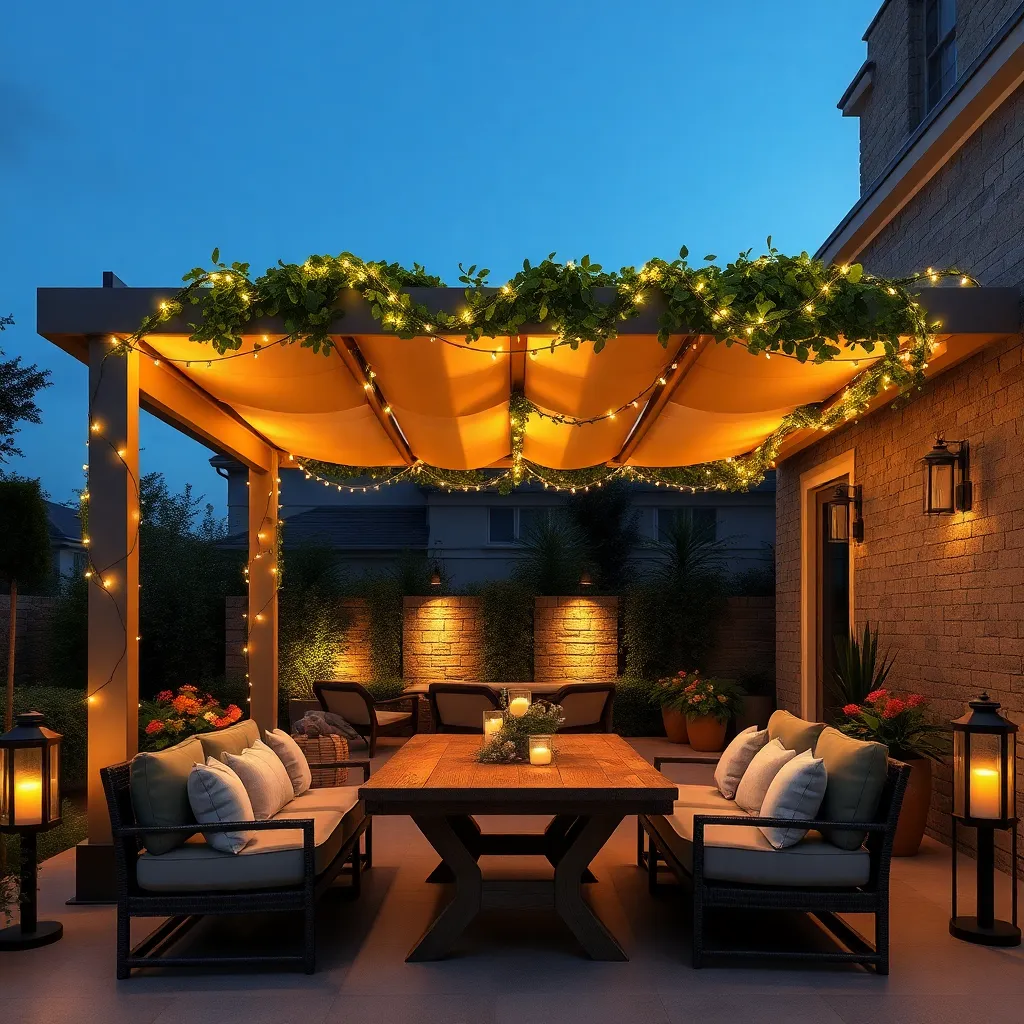
To create a cozy and inviting atmosphere in your outdoor space, consider layering different types of lighting. Start with a combination of ambient, task, and accent lighting to address various needs and enhance the overall ambiance.
- Ambient lighting
might include string lights or lanterns hung around the perimeter, providing a warm glow throughout the area.
Task lighting, such as downlights or path lights, will illuminate specific areas like walkways or dining spaces, ensuring safety and functionality.
For a touch of elegance, incorporate accent lighting to highlight architectural features or landscape elements. Use spotlights or LED uplights to cast light on trees or garden sculptures, adding depth and intrigue.
- Choose durable, weather-resistant materials
like stainless steel or copper for fixtures to endure various climates.
Advanced tip: Consider incorporating solar-powered fixtures for an eco-friendly and cost-effective solution. With thoughtful layering, your outdoor space will become a radiant extension of your home, perfect for relaxation or entertaining.
Conclusion: Creating Beautiful Outdoor Spaces
In exploring the 13 outdoor comfort ideas for your next project, we’ve delved into innovative ways to enhance your relationship through shared outdoor experiences. From creating cozy seating areas to integrating nature with thoughtful landscaping, these concepts emphasize the power of a serene environment in fostering deeper connections. We’ve touched on the importance of lighting for ambiance, the magic of a fire pit for intimate evenings, and the soothing sounds of a water feature to encourage reflective conversations. Each idea serves as a reminder that our physical spaces can greatly influence our emotional ties.
Now, it’s time to take action: choose one idea from this list and implement it this weekend. Whether it’s something as simple as adding a hammock or as involved as starting a garden project, take this step to enrich your relationship. Remember to bookmark this article for easy access whenever you need a burst of inspiration or a reminder of the little things that can strengthen your bond.
Looking ahead, know that nurturing your environment is a powerful step towards lasting relationship success. By embracing these ideas, you’re not just creating a comfortable space; you’re building a foundation for enduring love and connection. Save this article, and let it be a guidepost on your journey to a more fulfilling relationship.
